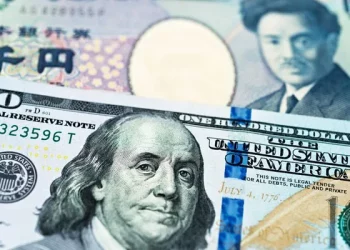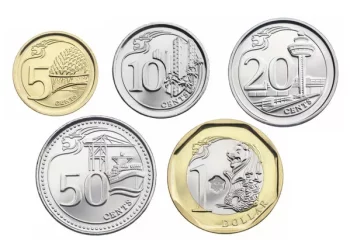The New Zealand Dollar (NZD), affectionately known as the “Kiwi,” is one of the most traded currencies in the foreign exchange (forex) market. Its prominence owes much to New Zealand’s stable economy, transparent financial system, and the currency’s role as a proxy for risk-on sentiment, particularly in relation to commodities. Yet, behind the polished notes and coins lies a fascinating story about their production, issuance, and management. In this article, we will delve into where New Zealand’s currency is made, the processes involved, and how these contribute to the nation’s financial ecosystem.
A Brief History of New Zealand’s Currency
Before understanding where New Zealand’s currency is manufactured, it is essential to understand its historical context. Prior to the introduction of the New Zealand Dollar in 1967, the country used the New Zealand Pound, which was tied to the British Pound Sterling. However, in a bid to modernize and align with decimal currency systems adopted by other nations, New Zealand replaced the Pound with the Dollar.
Since its inception, the New Zealand Dollar has been a symbol of the country’s economic independence. Initially pegged to the US Dollar, the NZD became a free-floating currency in 1985. This move allowed market forces to determine its value, making the Kiwi an appealing choice for global forex traders.
Where Is New Zealand’s Currency Produced?
New Zealand’s currency is designed, manufactured, and distributed under the oversight of the Reserve Bank of New Zealand (RBNZ). The production process involves both domestic and international institutions, ensuring the currency meets the highest standards of security, durability, and aesthetic appeal.
Banknotes: Produced Overseas
New Zealand’s polymer banknotes are not printed locally but are produced overseas by specialized companies. The current banknotes, part of the Series 7 “Brighter Money” collection, are printed by De La Rue, a UK-based firm specializing in banknote production. Previously, New Zealand banknotes were printed by the Australian company Note Printing Australia (NPA), but this responsibility shifted to De La Rue in recent years.
The choice to outsource banknote printing is rooted in efficiency and cost-effectiveness. Producing high-quality polymer notes requires advanced technology, substantial investment, and stringent security protocols. Rather than duplicating these resources domestically, the Reserve Bank of New Zealand contracts external suppliers that already specialize in these capabilities.
Coins: Minted in Canada
Unlike banknotes, New Zealand’s coins are minted abroad. Since 2006, the Royal Canadian Mint has been responsible for minting New Zealand’s coins. The transition to the Canadian Mint followed a decision to modernize the design and composition of coins to make them lighter, smaller, and more cost-efficient. Prior to this, coins were minted in several locations, including the United Kingdom and Australia.
The Royal Canadian Mint is renowned for its precision, quality, and innovation. By entrusting coin production to this institution, New Zealand benefits from advanced minting techniques and stringent quality control standards.
The Manufacturing Process: From Concept to Circulation
The creation of New Zealand’s currency is a meticulous process involving several stages, from initial design to final distribution. Let’s explore the key steps involved:
1. Designing the Currency
The design process is a collaborative effort involving artists, designers, and security experts. The Reserve Bank of New Zealand oversees this process to ensure the currency reflects New Zealand’s heritage, culture, and values. For instance, the current banknotes feature prominent New Zealand figures, native wildlife, and iconic landscapes.
Security features, such as holograms, microtext, and transparent windows, are integrated into the design to combat counterfeiting. Polymer substrates also enhance durability, ensuring the notes can withstand frequent handling.
2. Printing Banknotes
Once the design is finalized, it is sent to the contracted printer. De La Rue uses advanced polymer technology and high-security printing techniques to produce the banknotes. Key steps include:
Substrate Preparation: Polymer sheets are prepared with a base layer of protective coating.
Printing: Multiple layers of ink are applied to create the intricate designs, colors, and security features.
Quality Control: Each note undergoes rigorous inspection to ensure consistency and accuracy.
3. Minting Coins
The process of minting coins at the Royal Canadian Mint involves:
Metal Preparation: Blanks are made from metal alloys chosen for durability and cost-effectiveness.
Striking: High-pressure machines imprint the coin designs, including Queen Elizabeth II’s portrait (or, in the future, King Charles III) and New Zealand’s distinctive symbols.
Inspection: Coins are carefully inspected for defects before being packaged for shipment.
4. Distribution
Once the notes and coins are manufactured, they are shipped to New Zealand and stored in secure facilities. The Reserve Bank distributes the currency to commercial banks, which then circulate it to the public.
Why Outsource Currency Production?
Outsourcing currency production is a strategic decision based on several factors:
Cost Efficiency: Manufacturing currency domestically would require substantial investment in facilities, technology, and expertise. Outsourcing reduces these costs.
Expertise: Firms like De La Rue and the Royal Canadian Mint are global leaders in currency production, offering unparalleled expertise and innovation.
Security: Specialized companies adhere to rigorous security protocols, minimizing the risk of theft or counterfeiting.
Scalability: Outsourcing allows for flexibility in production volumes, ensuring currency supply aligns with demand.
The Role of the Reserve Bank of New Zealand
While currency production is outsourced, the Reserve Bank of New Zealand remains the ultimate authority over the nation’s money supply. Its responsibilities include:
Issuance: Ensuring sufficient currency is in circulation to meet public and economic needs.
Design Approval: Overseeing the design process to ensure the currency aligns with New Zealand’s identity and security requirements.
Monetary Policy: Using tools like interest rates to maintain price stability and support economic growth.
Currency Management: Replacing worn-out notes and coins, withdrawing outdated designs, and preventing counterfeiting.
The Transition to Digital Payments
Despite the meticulous effort that goes into producing physical currency, its use is declining as digital payments gain popularity. In New Zealand, electronic payment methods such as EFTPOS, credit cards, and mobile apps are widely used, reducing reliance on cash.
However, physical currency remains vital for certain segments of society and as a failsafe during technological disruptions. The Reserve Bank continues to emphasize the importance of maintaining a robust cash system alongside digital innovations.
Conclusion
New Zealand’s currency, while a common feature of everyday life, represents a complex interplay of design, technology, and global collaboration. Banknotes printed in the United Kingdom and coins minted in Canada symbolize the trust New Zealand places in specialized institutions to deliver high-quality currency.
The Reserve Bank of New Zealand plays a crucial role in ensuring the currency serves the nation’s needs, balancing tradition with innovation. While the shift toward digital payments is undeniable, the story of New Zealand’s physical currency underscores its enduring significance in both the economy and cultural heritage.
As the Kiwi continues to soar in the forex market and beyond, the careful craftsmanship behind each note and coin is a reminder of the intricate systems that underpin global finance.
Related Topics:



























